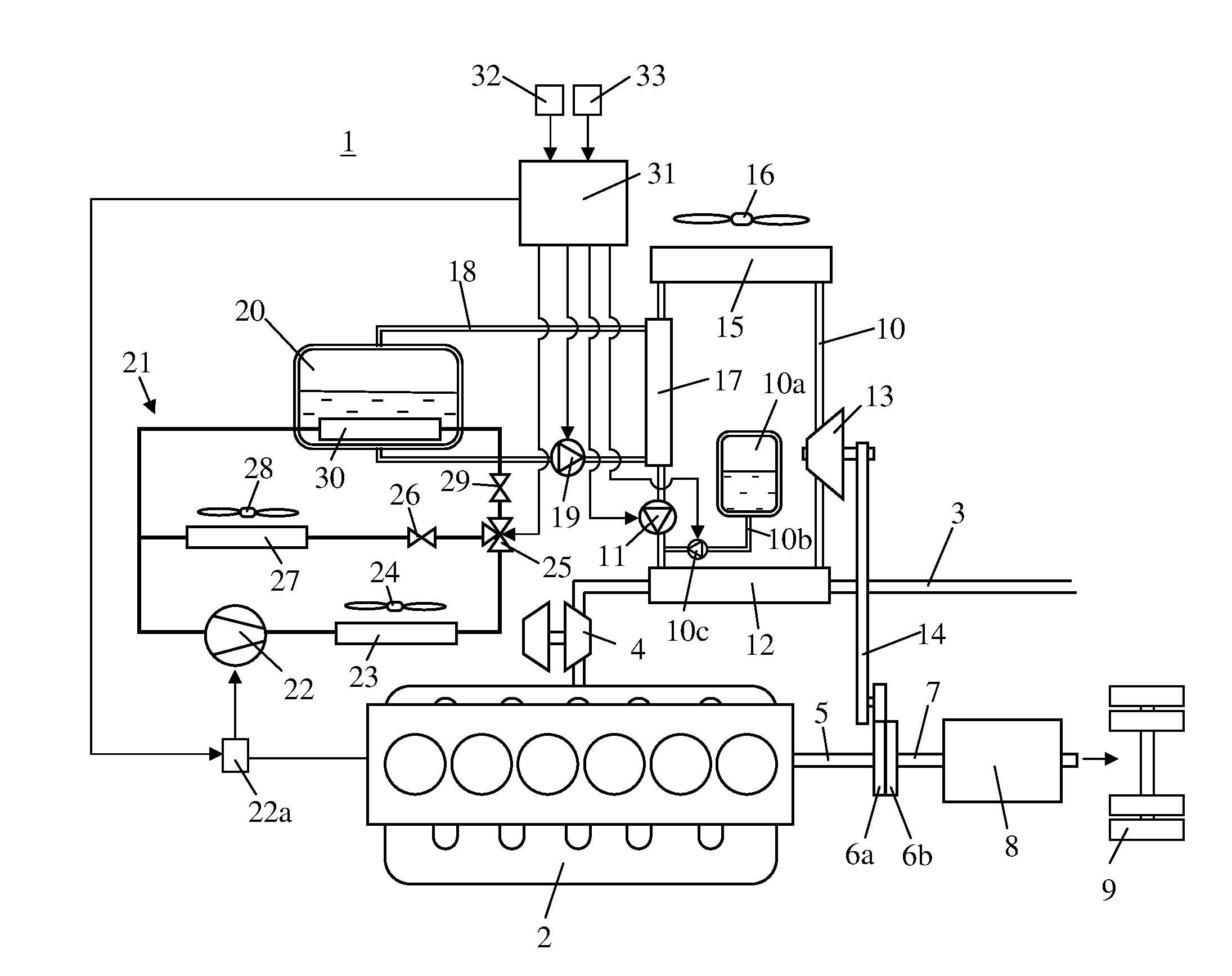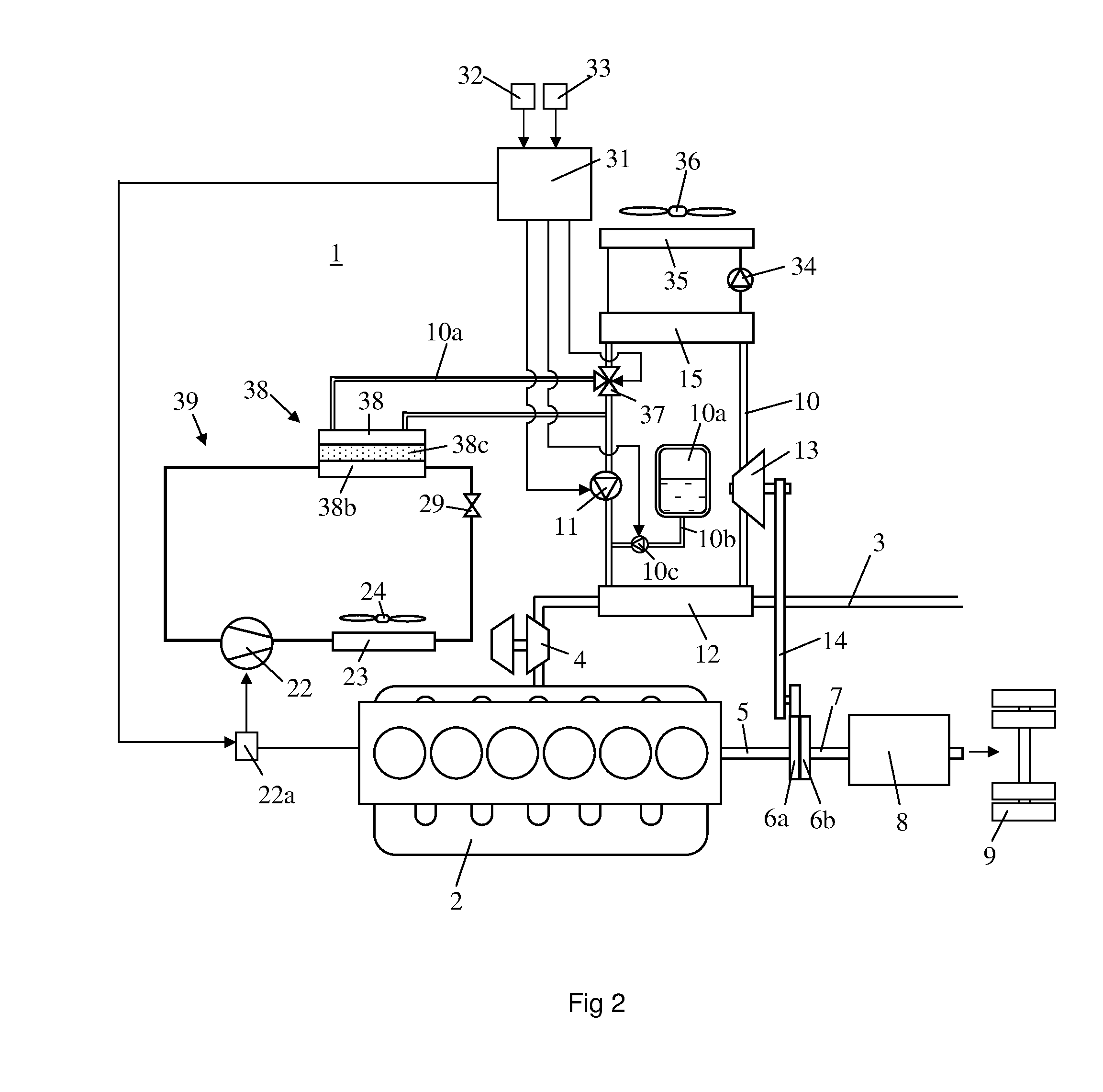Arrangement for converting thermal energy to mechanical energy in a vehicle
a technology of mechanical energy and thermal energy, which is applied in the direction of machines/engines, braking systems, machine operation modes, etc., can solve the problems of increasing the amount of mechanical energy being created in the turbine, and achieves the effects of reducing the amount of mechanical energy, and increasing the efficiency
- Summary
- Abstract
- Description
- Claims
- Application Information
AI Technical Summary
Benefits of technology
Problems solved by technology
Method used
Image
Examples
Embodiment Construction
[0016]FIG. 1 depicts an arrangement for conversion of thermal energy to mechanical energy in a schematically depicted vehicle 1 powered by a supercharged combustion engine 2. The vehicle 1 may be a heavy vehicle powered by a supercharged diesel engine. The exhaust gases from the engine's cylinders are led to an exhaust line 3 which comprises a turbine 4 in a turbo unit. The vehicle has a power train starting with the combustion engine 2, a shaft 5, a flywheel 6a, a clutch 6b, a shaft 7, a gearbox 8 etc. The power train ends with a pair of powered wheels 9. The power train rotates as a unit when the clutch 6b is engaged.
[0017]The vehicle is equipped with an arrangement for recovery of thermal energy. The arrangement may be referred to as a WHR (waste heat recovery) system and comprises a line circuit 10 with a pump 11 adapted to circulating and pressurising a working medium in the line circuit. The working medium is led from the pump 11 to an evaporator 12 in which it is warmed by ex...
PUM
 Login to View More
Login to View More Abstract
Description
Claims
Application Information
 Login to View More
Login to View More - R&D
- Intellectual Property
- Life Sciences
- Materials
- Tech Scout
- Unparalleled Data Quality
- Higher Quality Content
- 60% Fewer Hallucinations
Browse by: Latest US Patents, China's latest patents, Technical Efficacy Thesaurus, Application Domain, Technology Topic, Popular Technical Reports.
© 2025 PatSnap. All rights reserved.Legal|Privacy policy|Modern Slavery Act Transparency Statement|Sitemap|About US| Contact US: help@patsnap.com



